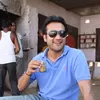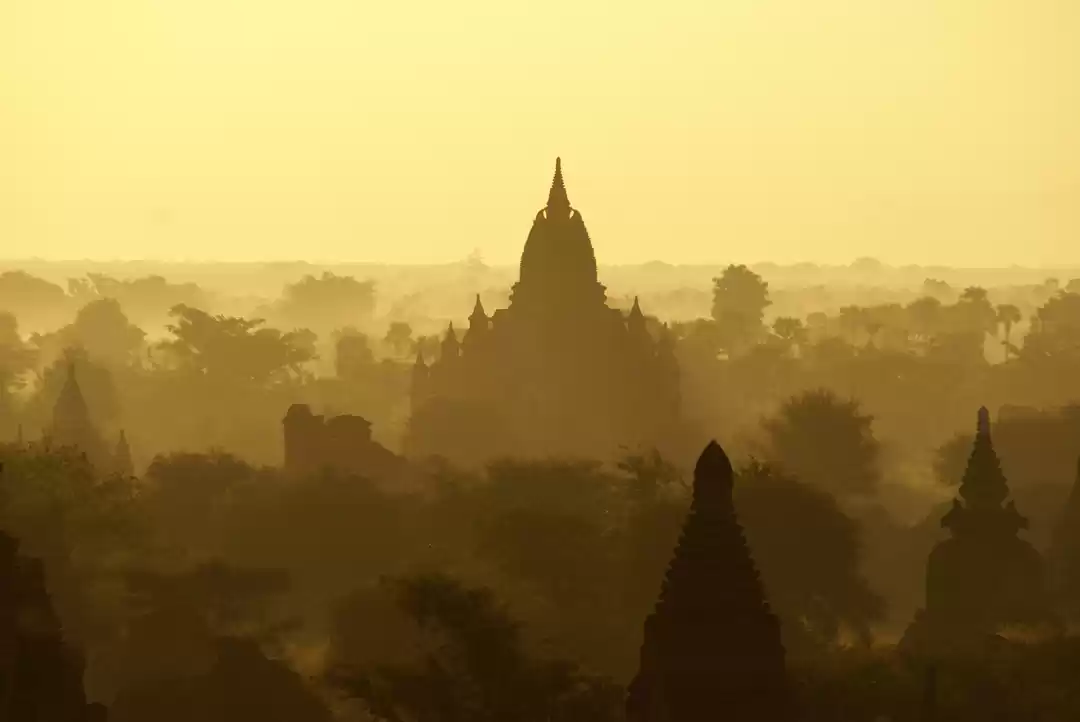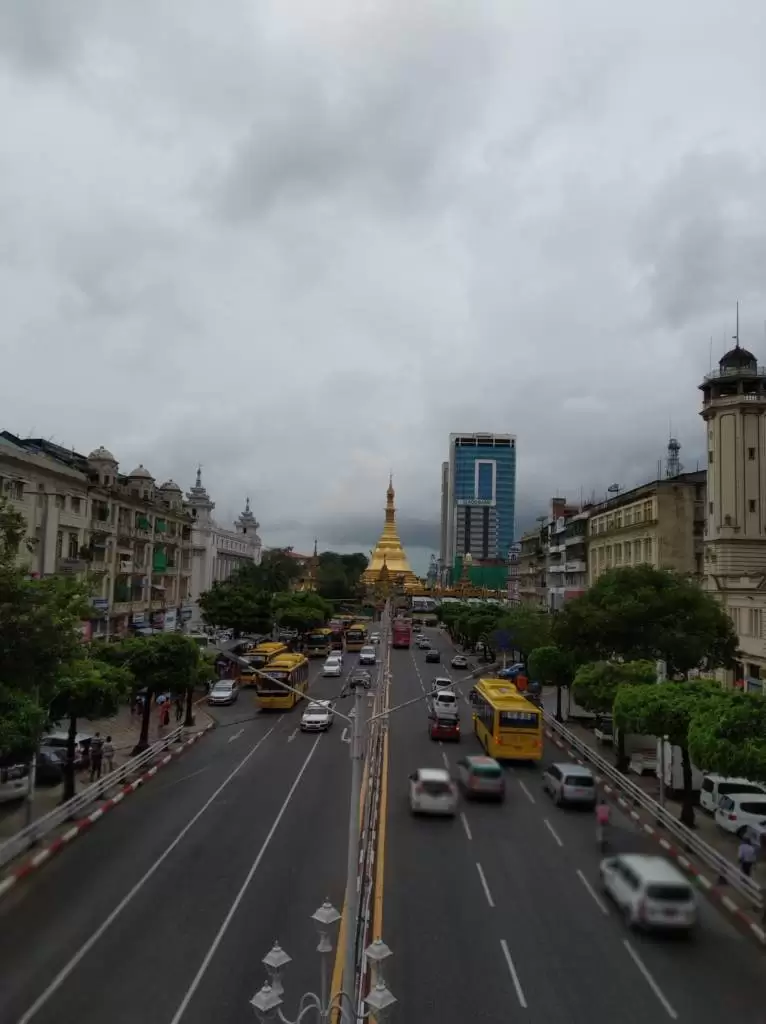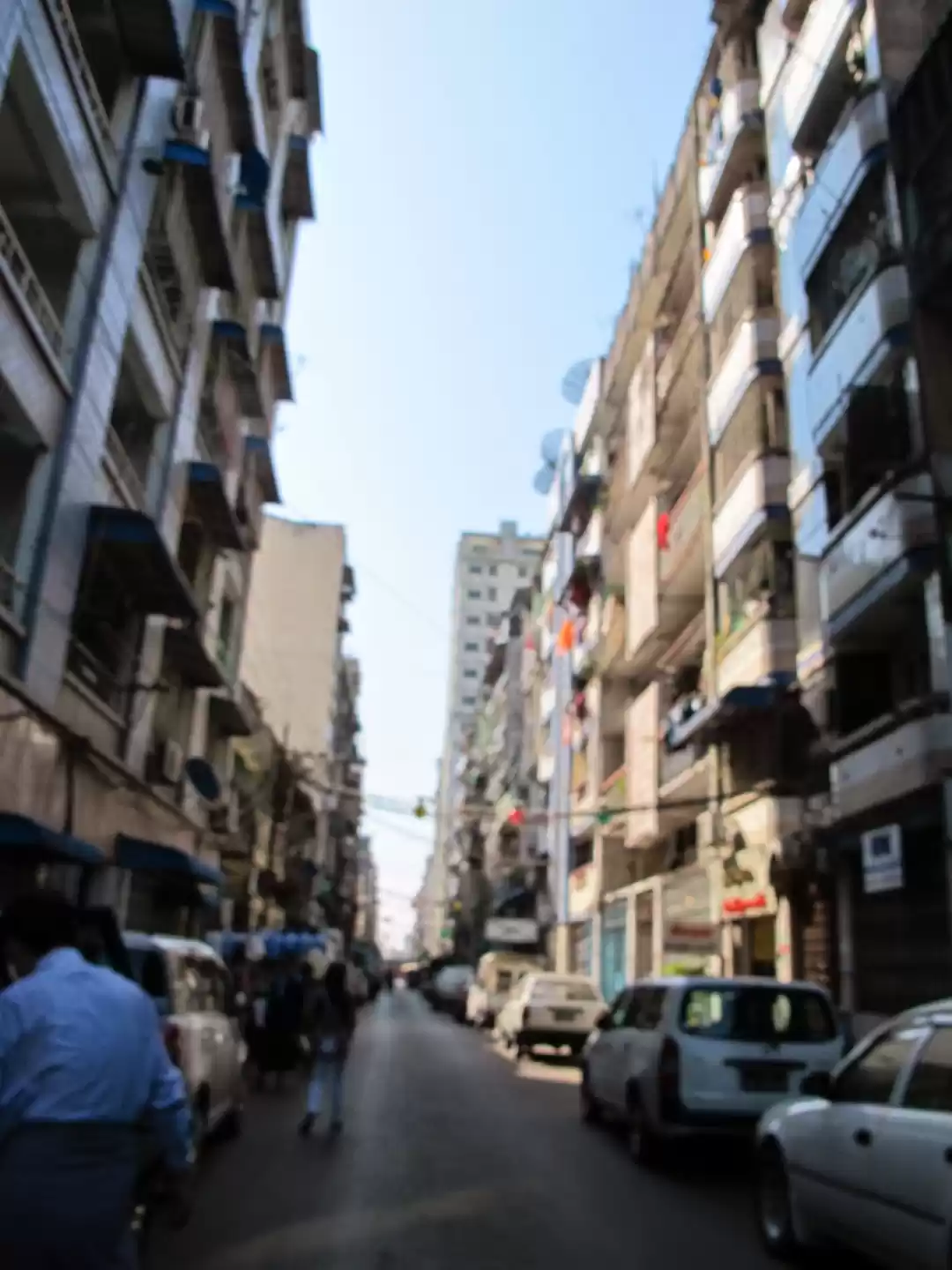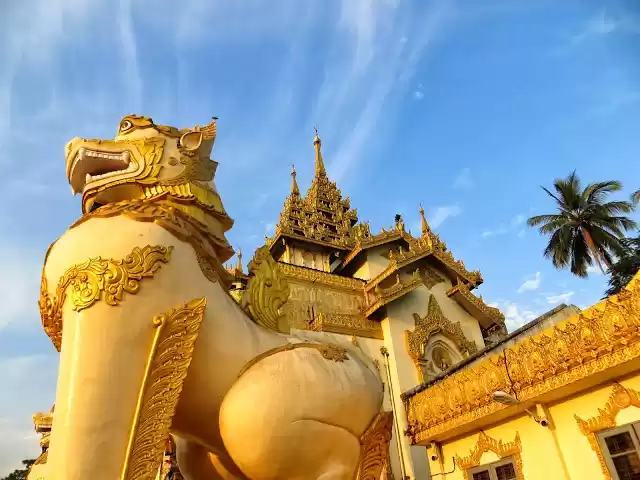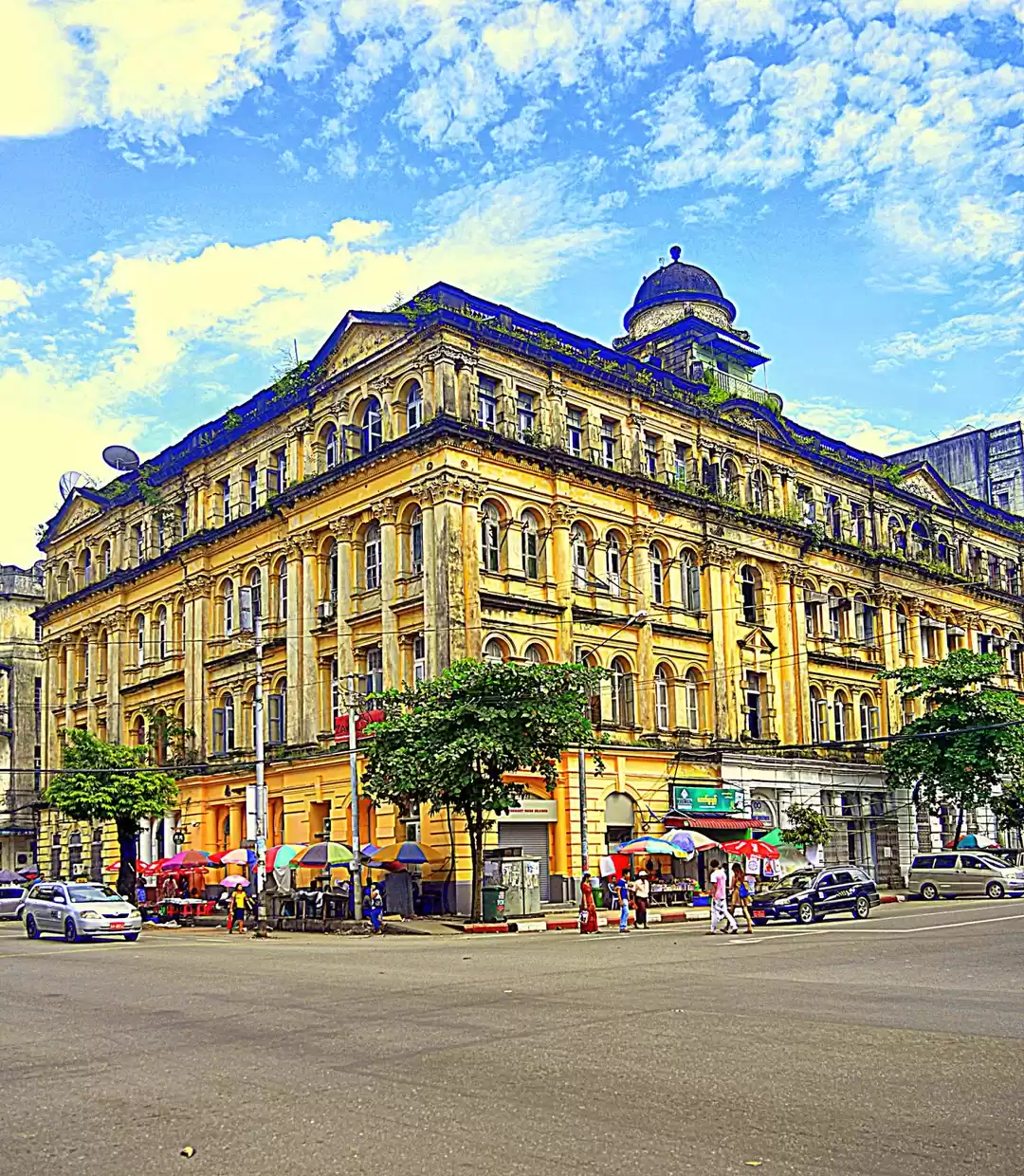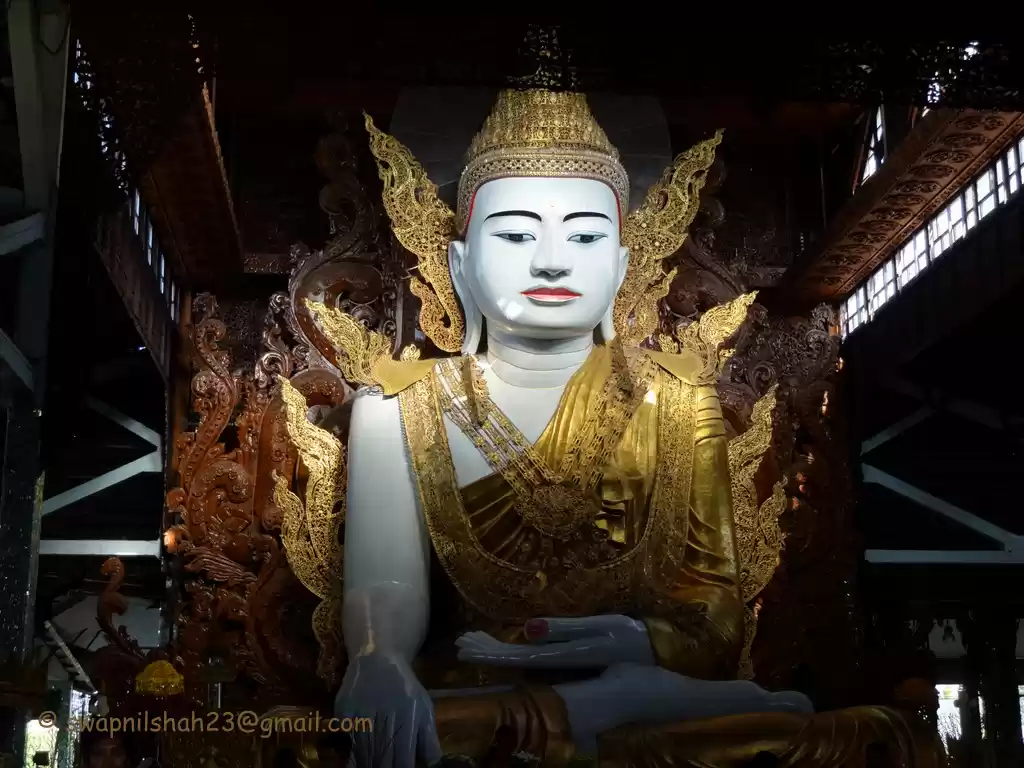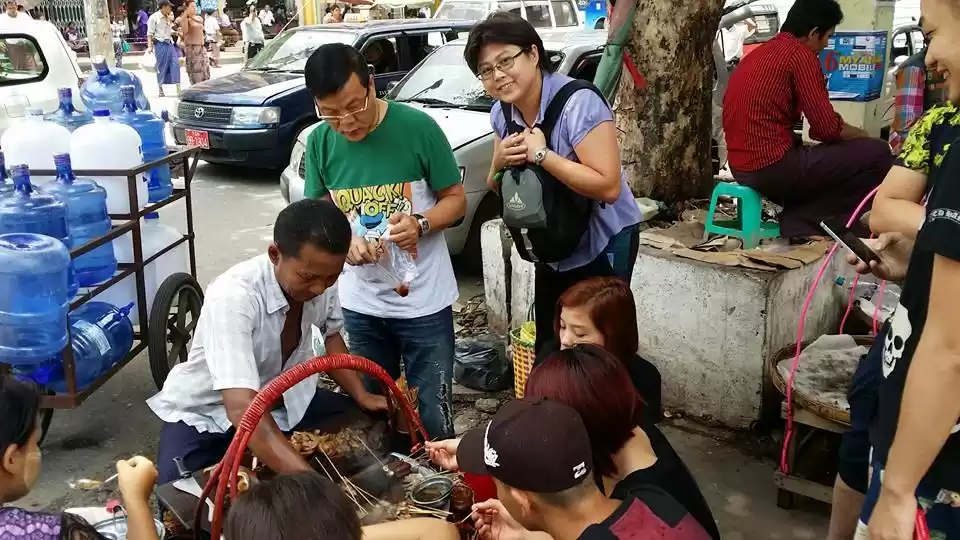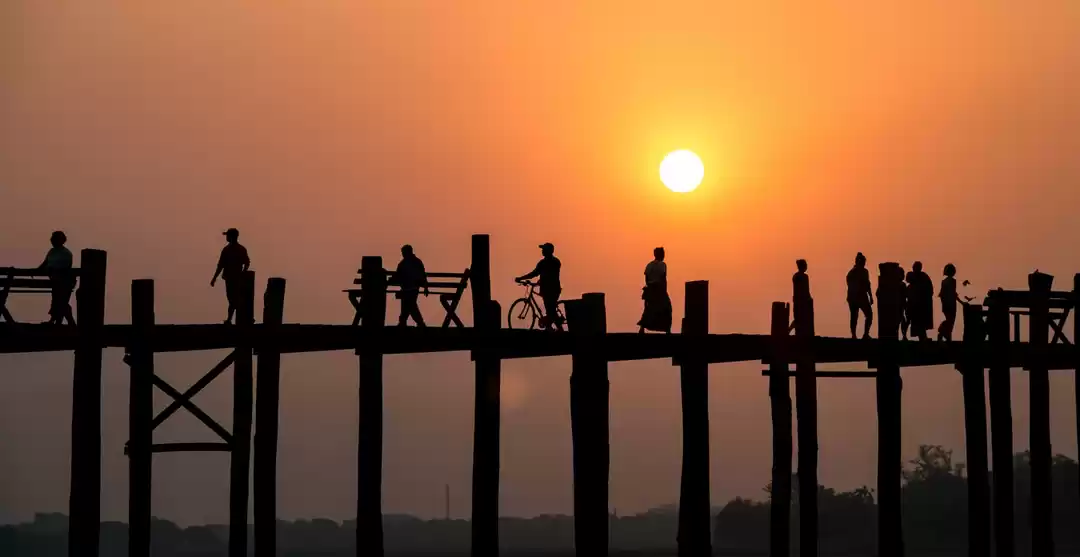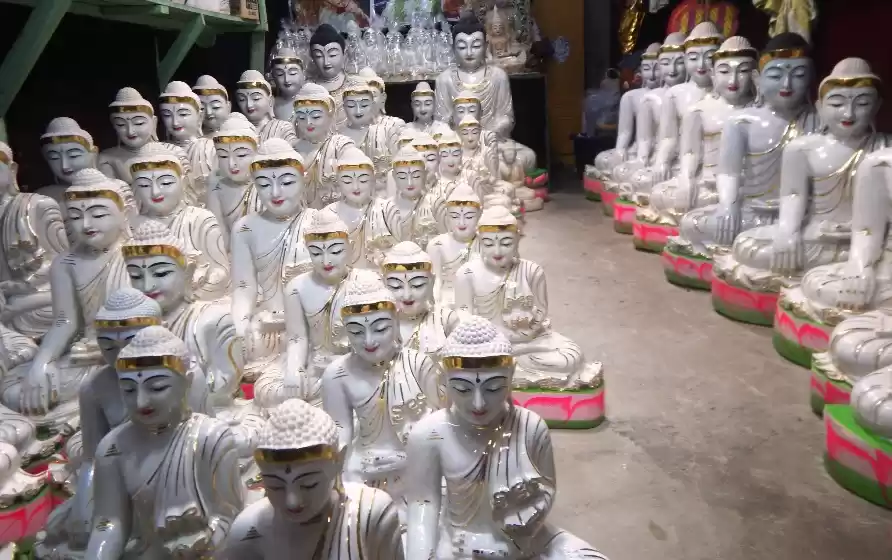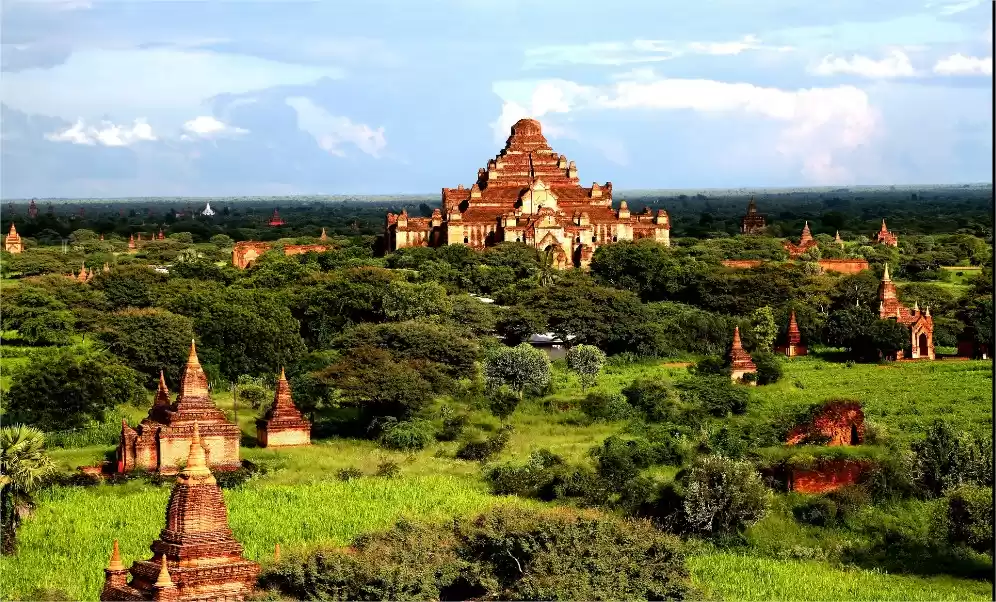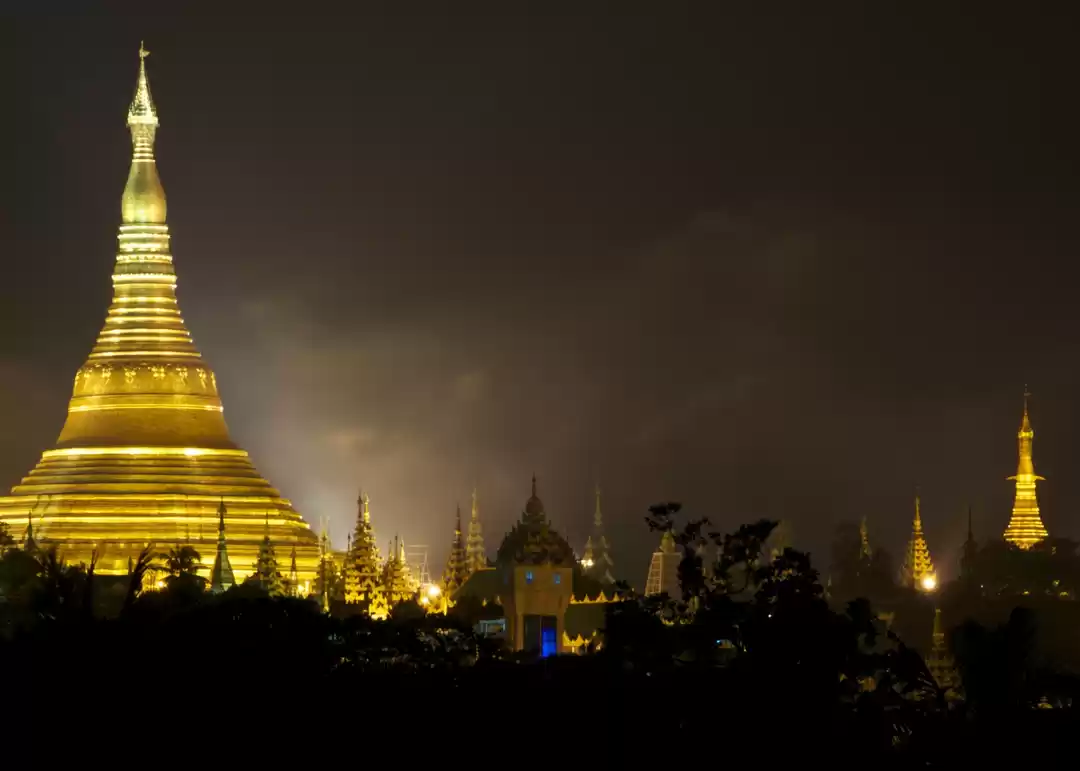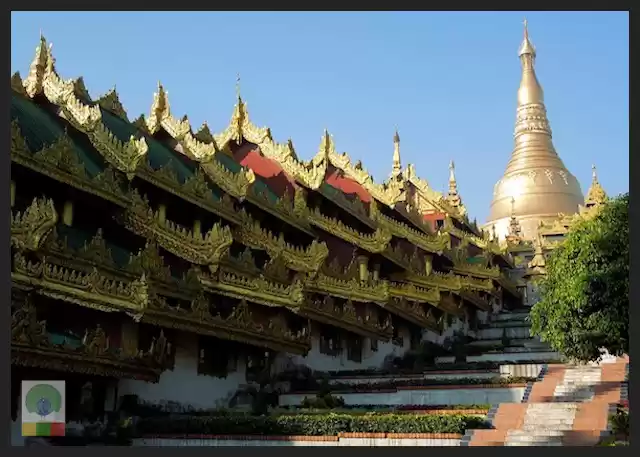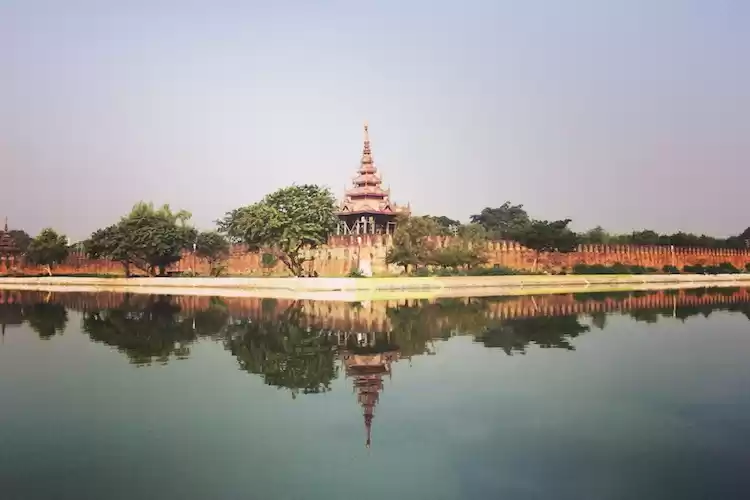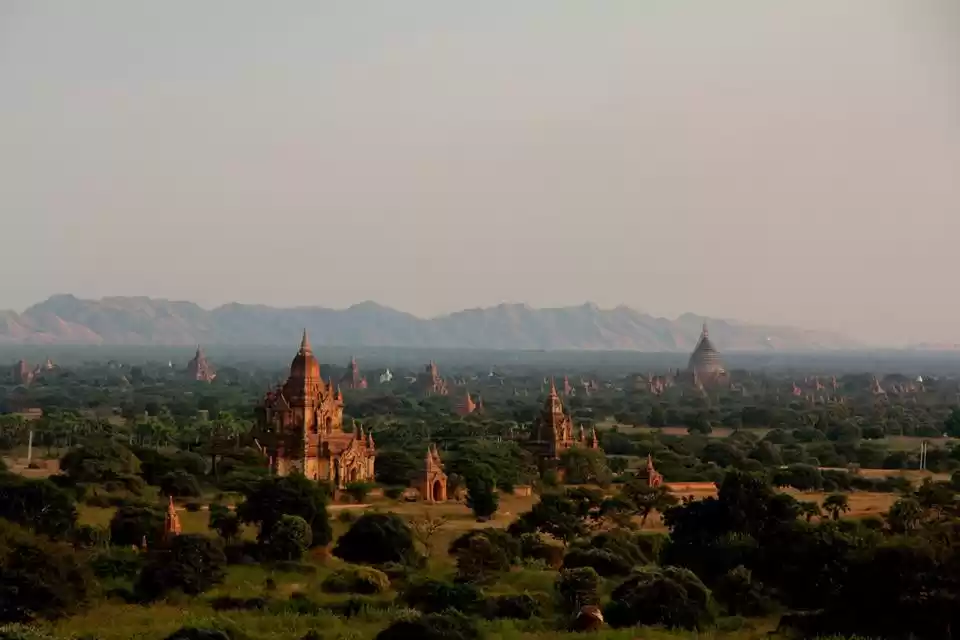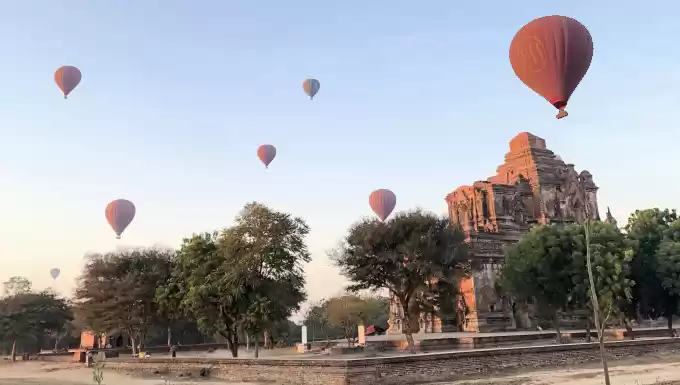












Someone has rightly said, “Everyone is wrong about foreign countries”. The more I travel, the more I believe in this statement. Be it driving through unexplored regions like Kazakhstan and Kyrgyzstan or through our neighbouring country Myanmar. It is very rare that you read or hear anything about positive about Myanmar in the news. The only name or the only image that comes to mind at the mention of Myanmar is that of Aung San Suu Kyi, the most revered leader of the country whose father Genereal Aung San is also known as the father of Myanmar.
Since entering Myanmar a few days back, everyday has been a surprise. The people here are always smiling. Be it the police, the shopkeepers, the hotel staff, the monks at the omnipresent Pagodas or people going about their daily chores in the local markets. Everyone greets you with a smile and a ‘Mingalawa’ wherever you go. Although we were a bit apprehensive about crossing the Manipur-Myanmar border thinking that the border guards would be very strict and would do a thorough check of our documents, baggage and the vehicle before letting us into their country, we couldn’t be more wrong. The border crossing was a breeze. We were through the Moreh border on India side in 15 minutes and must have spent a maximum of 30 minutes at Tamu border on the Myanmar side.
To be fair, the credit for such a smooth border crossing goes to Mr Tin Maung Shwe, our co-ordinator in Myanmar. Mr Tin is a 61 year old, ex army officer who has also served as the Director General at the Ministry of Tourism. He is a jovial man who is always smiling and laughing, talking very loudly, full of life and extremely disciplined.
As we crossed the India Myanmar friendship bridge, I spotted him standing at the other end of the bridge under an umbrella, signalling us to park the car in a corner. I parked the car, got out to greet him and he came and hugged me warmly like long lost friends.
“You worried Tooshaaa that Tin will not be at border? Here I am!” he said and laughed loudly. Mostly, his sentences would be followed by a hearty laughter.
“Remember, now you are driving on the right side of the road, not like India. So be careful and go slow.” he instructed. He sat in his car and asked us to follow him. We gave him a handheld radio set on which he kept giving us instructions on traffic rules and driving etiquettes in Myanmar. Since Myanmar is more than 50% covered with forests, we would be following his escort vehicle for most part of the journey.
As we started driving on the right side of the road, we noticed that most cars had steering wheel on the right side of the car just like we do in India.
“Normally, if cars are driving on the right side of the road, steering wheel is on the left side like in America. How come here steering wheel is also on the right?” We asked
“It’s because in Myanmar, second hand cars are imported from India and other Asian countries like Thailand. All these countries have cars with steering wheel on right side, so you see, that’s the reason. But new cars in Myanmar come with steering wheel on left side.” Mr Tin told us over the radio.
We stopped for lunch at a small restaurant near the highway where a feast was spread out for us. Chicken curry, dried mutton, fish curry, bamboo shoots, tempura, sausages, feather fish fingers, bean sprouts, prawns, steamed rice and a few more.
“Umm, is all this for us?” I asked looking at all the food in disbelief.
“Haha, oh Tooshaa, do not worry, eat eat. Welcome to Myanmar!” he replied laughing.
After stuffing ourselves with all the delicacies, we hit the road again for Kalay, our first destination in Myanmar. It was a very interesting drive during which we crossed 42 iron bridges within a range of 100 km!
“Careful, bridges very old, only one car at a time” Mr Tin instructed on the radio
What’s a road trip without a bit of a challenge? Our journey from Kalay to our next destination Monywa was nothing short of a thrilling experience which put our driving skills to test. The entire journey was through dense forests and for a long time we found ourselves driving through hilly terrain on mud, slush, gravel and rocks. It kept raining all day long which made the ground even more soft and slippery. Sanjay and I were having a great time driving in rain through the virgin forests and on muddy grounds. Though we are not strictly off road experts, but we do enjoy negotiating with challenging terrains.
At one point during this drive, we came across a river that was overflowing from one side of the road to the other at a fairly high speed. Mr Tin, who was leading us in his car, asked his driver to get out and check the depth of the water by putting a stick in the flowing water.
“Always check water level before crossing it. Never hurry. Check carefully the depth otherwise your car may drown.” he explained
We saw his driver lift up his longyi (traditional Myanmar clothing worn like a sarong) and walk towards the water stream holding a stick in his hand. We saw him put the stick into the water which seemed fairly deep but safe enough for the vehicle to cross. He came back, sat in his car and slowly drove through the overflowing water. We followed him swiftly and were able to cross the stream without any trouble. But the water level check was definitely worth it. It gave us the confidence to cross the river knowing that the water level wasn’t very deep.
Monywa was only a transit for us. Over the next few days, we drove a lot, ate a lot and saw a lot of incredible places. I don’t know where to begin. Should I first talk about Bagan, the 11th century historic town which is home to 4,446 temples, pagodas and monasteries? While driving from Monywa to Bagan, we had no idea what we were going to witness in a few hours. I had vaguely heard of Bagan as a very popular tourist destination but it was a place that is difficult to describe in words. A small town boasting of 4,446 monuments most of which were built in the 11th century. We climbed the top of one Pagoda to get an aerial view of Bagan and in every direction all we could see were monuments of all shapes and sizes as far as the eye could see. It was almost like someone had splattered temples and monasteries all over the place.
Our guide, Aung, a native of Bagan, took us for a sightseeing tour to see some of the most famous Pagodas. He told us a lot about the history of the monuments and pointed at the intricate details in the paintings and the carvings on the walls inside these monuments like a seasoned tourist guide. To be honest, I started listening with interest, but my attention span is limited and soon I lost focus and simply start walking while Sanjay politely stood and listened intently to every word.
I felt a very positive vibe, calmness, peace of mind, something very soothing while visiting the various sights of Bagan. In one of the Pagodas, while walking, I found a corner and simply sat there looking at nothing in particular for some time. It was very quiet, calm and peaceful. I didn’t think I could ever sit still for more than 2 minutes, but then, it is journeys and places that make you find your own self. Some places make you react in a certain way and show you that side of you which you never knew existed.
After spending the day visiting lots of places of historic importance and briefing Aung about our journey, it came as a surprise when Aung invited us home for dinner. We had told him that one of these days in Myanmar we would like to visit a local person’s home to see the lifestyle and culture but I guess he took it a bit too seriously and invited us to his own house.
“I will cook a special meal for you and my family will be very happy to meet you all” he said.
We were surprised but very happy. Myanmar was throwing new surprises at us every day. The scenic landscapes, the beautiful monuments and the lovely people. On way to Aung’s home for dinner in the evening, Sanjay requested him to first take us to a souvenir shop to buy an ‘Owl’ show piece which is considered good luck in Myanmar.
We choose a few pieces of the good luck ‘Owl’ and while paying at the cash counter, when Aung told the old lady behind the counter about our journey, she refused to take money for our souvenirs.
“Well done, congratulations, it is my honour to present these as a gift to you” she said to us.
We were overwhelmed. We insisted on paying but she just wouldn’t take the money. The kindness and the love was in the air in Bagan. We thanked her for the gifts and went to Aung’s home for dinner. He lived in a small house made of wood and bamboo. The ground floor of the house had an open dining area and kitchen, behind which a corridor led to another open area which was used as a room by his parents. There was one bedroom on the same floor which was Aung’s room.
“My room has air conditioning!” he said proudly as we entered his room.
The entire first floor was converted into a Buddhist shrine. We met Aung’s parents, an old couple who couldn’t speak any word in English but sat next to us and just kept smiling all evening. His mother kept bringing us various things to eat and drink and though they looked tired and sleepy, but wouldn’t go to sleep while we ate. The meal was very lovingly prepared by Aung himself.
“Aung, you meet tourists from lots of countries all the time. Do you always treat them so nicely and call them home for meals?” I asked him during dinner.
“Haha, no no never, it is the first time I have invited my clients home.” He replied smiling. We thanked his family for their hospitality and went back to our hotel after a very satisfying evening.
Our journey only got better as we kept travelling through this incredible country. Our next stop was a town called Inle, named after the second largest lake in Myanmar called the Inlay Lake. As we sat in the makeshift narrow but long motorboat where 6 people sat on chairs one behind the other, the young boy handling the boat fired up the engine and slowly sailed us out of the canal to join the big lake. As the lake opened up in front of us, we all looked with eyes wide open at the perfect setting in front of us. Fishermen wearing traditional conical hats throwing nets in the water to catch their days supply of fish. It was interesting to see them using their legs to row the boat while their hands were busy handling the fishing nets. The lake was surrounded by green mountains in all directions which were partly covered with clouds below a bright blue sky. The reflection of sun on the lake made the shimmering blue water shine even more.
Our boat took us to visit a local market called the ‘5 day market’ which was set up by local tribes in 5 different corners of the lake on 5 days of the week. They would bring local produce from their villages and tribes and set up make shift stalls in and around the villages built near the lake. I saw a local vendor using old batteries (AA and AAA) as weights to weigh his vegetables. Local produce, vegetables, coconuts, fish, various types of rice and lots of other things were being sold. From the market, we went to visit a local weaving centre where the workers used stems of lotus flowers to make shawls and scarves.
“5 lakh lotus stems are used to make a single 1 metre shawl” Aung told us.
He then took us to visit a handmade cigar factory where tobacco and leaves grown around the lake were used to make cigars of various flavours.
While sailing back to Inle, we saw schools, hospitals, pagodas, restaurants; basically a whole different world built on the lake itself.
“This place seems so untouched. Even though a lot of tourists visit here, but it has its rawness, it’s not commercial; it has an old beauty and charm to it. I am so coming back here again.” I said.
“Rush rush, hurry hurry!” Mr Tin said loudly the following morning while leaving Inle for Yangon. As we sat in our car and switched on the engine, Mr Tin came on the radio and explained,
“Today is going to be a long driving day. Maybe 15 hours on the road, but road conditions very very good.”
We took the recently constructed Mandalay-Yangon expressway, an 8 lane highway that connected, you guessed it right, Mandalay, the commercial hub of Myanmar to Yangon, the capital city. The 8 lane futuristic highway was a complete contrast to the places that we had seen in Myanmar in the past few days. Driving on the expressway was almost like driving on the freeways of US or motorways of UK. We also passed through a city called Nay Pyi Daw, a new city built only in 2005.
“Nay Pyi Daw is the new Administrative capital of Myanmar. The government wants to shift all administrative offices, embassies, important government centres here.” Aung told us.
Nay Pyi Daw was again a surprise. We saw lots of luxury hotels, convention centres, well planned streets, roundabouts with shining statues and flower beds, but something was missing. I kept wondering what was lacking here. Then it hit me. People. The city looked empty. The hotels looked un used, the statues on the roundabouts were as good as new. The place felt a bit eerie. It’s like you enter a new building which looks very nice and shiny, also has that new paint smell, but is hollow and empty.
“Maybe 10 years from now, this city will look, umm, how shall I say, lived in.” I commented.
We moved on and continued driving on the expressway towards Yangon.
“Rush rush, please don’t spend too much time filming, we have to reach Yangon before the Shwe Dagon Pagoda closes. It is the most beautiful Pagoda in the country and you have to see it tonight” Mr Tin instructed on the radio
“Remember, first rule is safety, second rule is reaching on time and third rule is enjoying. Is that a Roger?” he said on the radio.
“Roger that Mr Tin!” I replied from our car.
He was an ex-army officer and he worked by the clock. Very disciplined, no nonsense kind of a person, but a very jovial, generous and caring human being.
We reached Yangon on time for sure and did see the lovely Shwe Dagon Pagoda before it closed. In the morning, Mr Tin had called a press conference for The Great Indian World Trip, where, in addition to the local media, film stars from Myanmar film industry were also present. I already knew some of them as they were part of ASEAN India Car Rally. But even though they were high profile celebrities, each one of them turned up for our press conference and spent a couple of hours chatting with us.
There is nothing negative I can point about Myanmar. The country is very clean, no matter which part of the country you are travelling through, you will always find good food, clean toilets, fairly good roads and even though most people chew tobacco and pan all day long, but they never spit on the road.
As we approached the Myanmar-Thailand border, our last stop was a place called Golden Rock.
“Golden Rock is a place that you will remember all your life. We call it the 8th wonder of the world.” Mr Tin said proudly. We had already seen so many incredible places in Myanmar, but yet again, visiting Golden Rock faded everything that we had seen so far.
Imagine a massive boulder, a giant piece of rock as big as a truck. Imagine this massive rock hanging on the edge of a cliff for centuries without any support. Now, imagine this giant rock painted in gold, shinning in the moonlight, covered in mist, with clouds floating below it. Oh, and not to forget, a Pagoda built on top of it. The cool breeze, the green mountains, the Buddhist chants, the candles, the fragrance of incense, the monks worshipping around it, people folding hands and bowing in front of it. That is Golden Rock. It really was a sight that I could never be prepared for. The calmness around it, the vibrations, the peaceful atmosphere, your eyes would automatically close and don’t be surprised if you are lost in a trance. Some people will smile, some emotional fools like me will cry, some will become quiet but one thing is for sure, Golden Rock will have its own impact on you.

